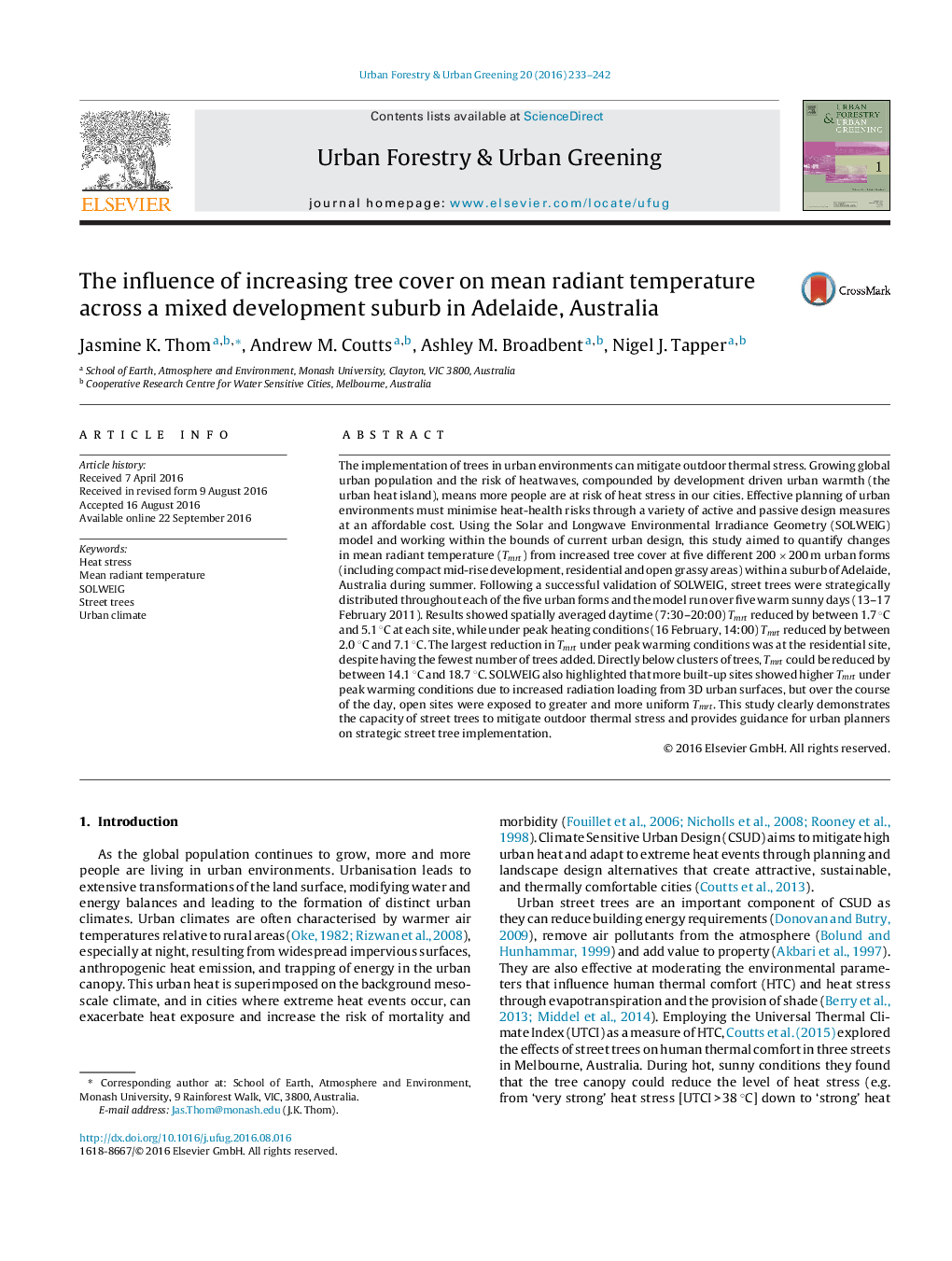| کد مقاله | کد نشریه | سال انتشار | مقاله انگلیسی | نسخه تمام متن |
|---|---|---|---|---|
| 6461923 | 1421870 | 2016 | 10 صفحه PDF | دانلود رایگان |
- Street trees are an effective approach to reduce mean radiant temperature.
- Street trees can be strategically located to deliver maximum thermal benefits.
- Placement should consider current urban geometry and pedestrian thermal stress.
- SOLWEIG is a suitable tool for urban design assessments to inform decision making.
The implementation of trees in urban environments can mitigate outdoor thermal stress. Growing global urban population and the risk of heatwaves, compounded by development driven urban warmth (the urban heat island), means more people are at risk of heat stress in our cities. Effective planning of urban environments must minimise heat-health risks through a variety of active and passive design measures at an affordable cost. Using the Solar and Longwave Environmental Irradiance Geometry (SOLWEIG) model and working within the bounds of current urban design, this study aimed to quantify changes in mean radiant temperature (Tmrt) from increased tree cover at five different 200 Ã 200 m urban forms (including compact mid-rise development, residential and open grassy areas) within a suburb of Adelaide, Australia during summer. Following a successful validation of SOLWEIG, street trees were strategically distributed throughout each of the five urban forms and the model run over five warm sunny days (13-17 February 2011). Results showed spatially averaged daytime (7:30-20:00) Tmrt reduced by between 1.7 °C and 5.1 °C at each site, while under peak heating conditions (16 February, 14:00) Tmrt reduced by between 2.0 °C and 7.1 °C. The largest reduction in Tmrt under peak warming conditions was at the residential site, despite having the fewest number of trees added. Directly below clusters of trees, Tmrt could be reduced by between 14.1 °C and 18.7 °C. SOLWEIG also highlighted that more built-up sites showed higher Tmrt under peak warming conditions due to increased radiation loading from 3D urban surfaces, but over the course of the day, open sites were exposed to greater and more uniform Tmrt. This study clearly demonstrates the capacity of street trees to mitigate outdoor thermal stress and provides guidance for urban planners on strategic street tree implementation.
Journal: Urban Forestry & Urban Greening - Volume 20, 1 December 2016, Pages 233-242
